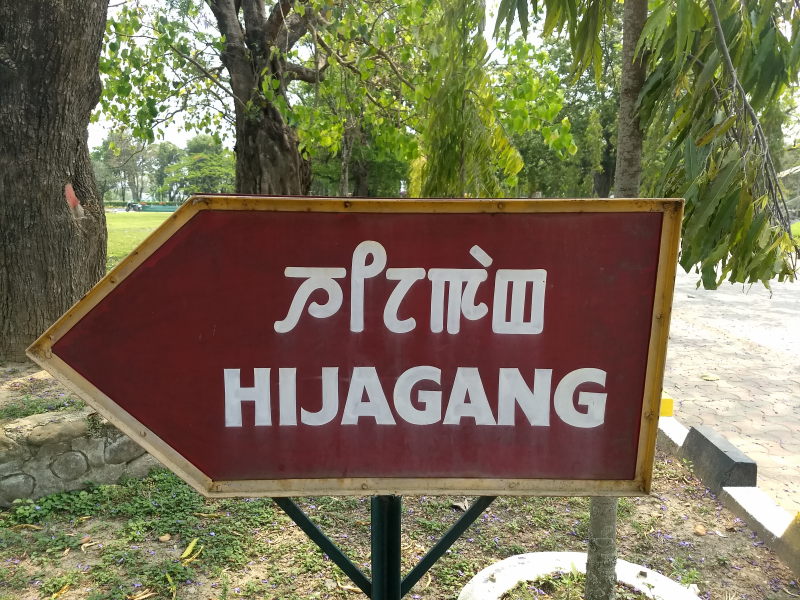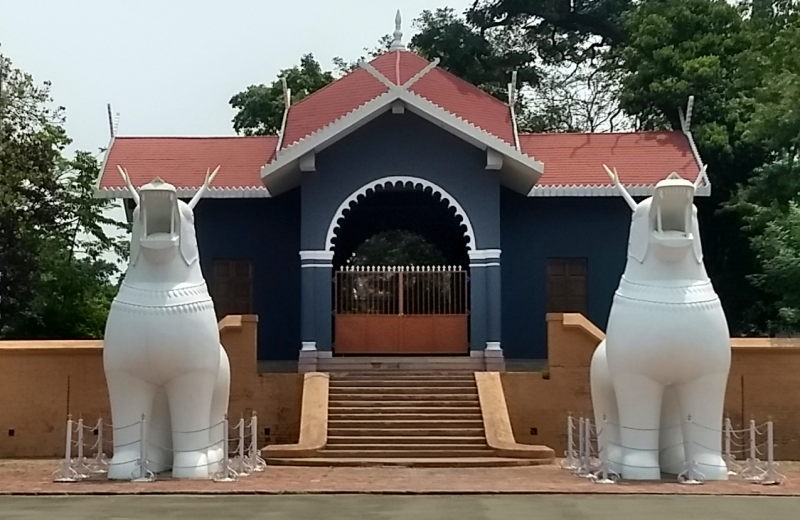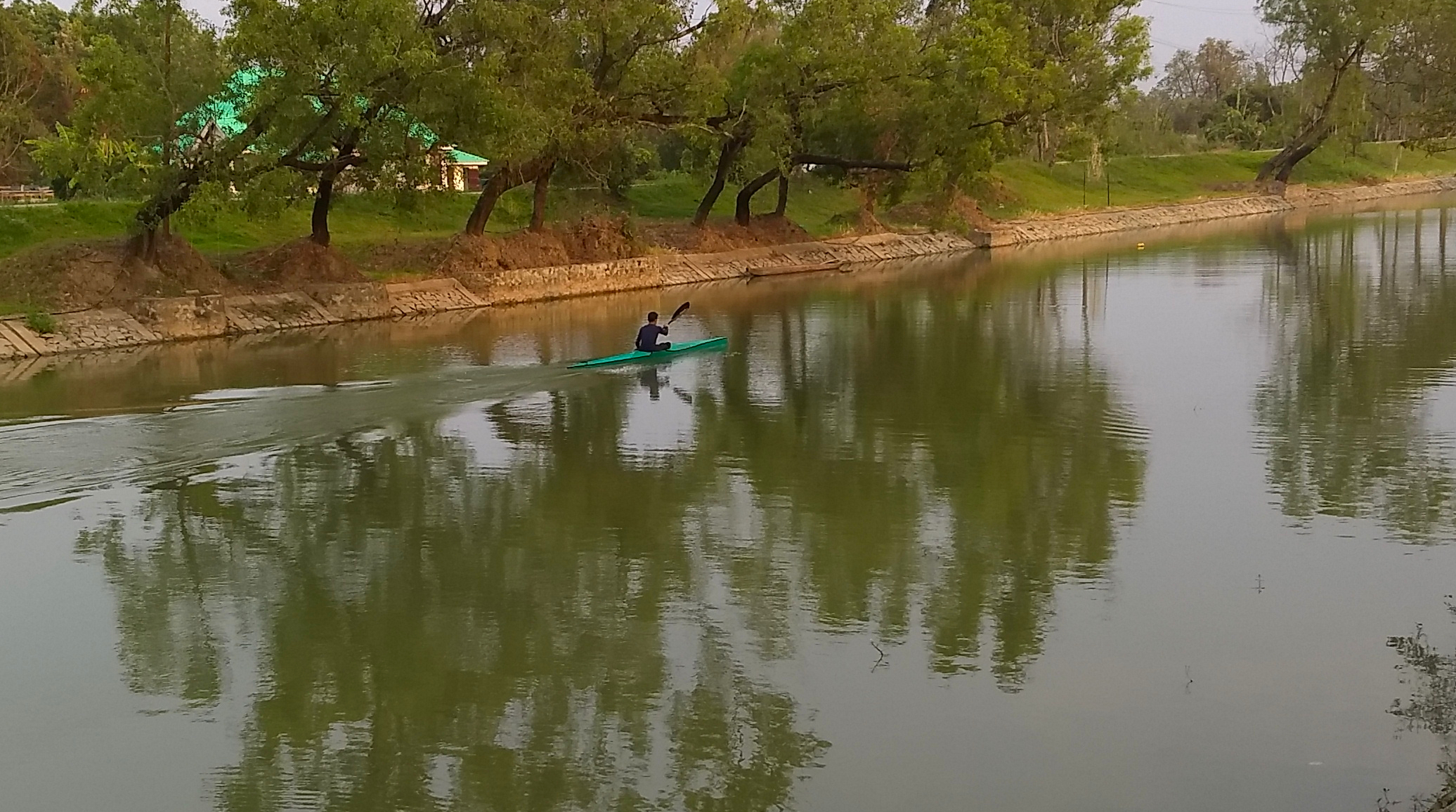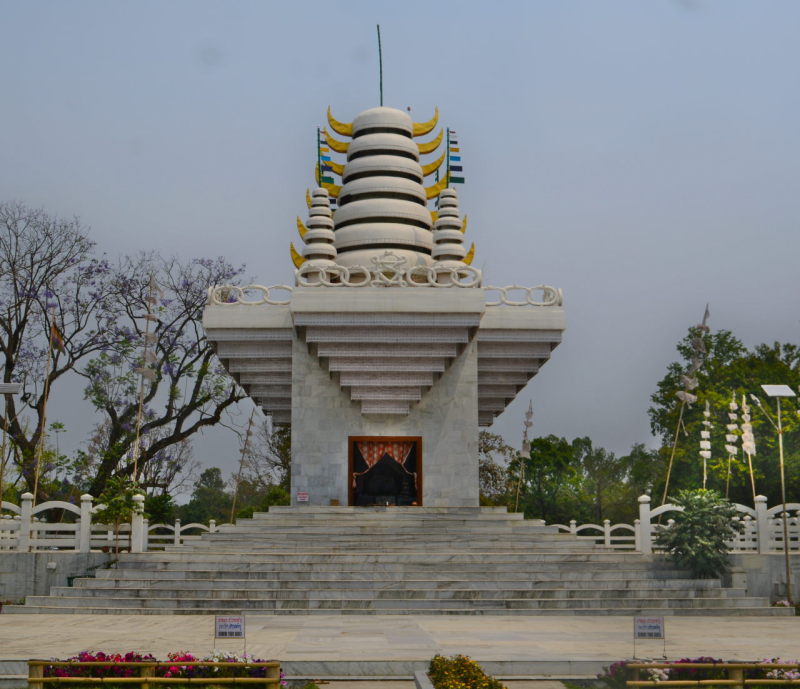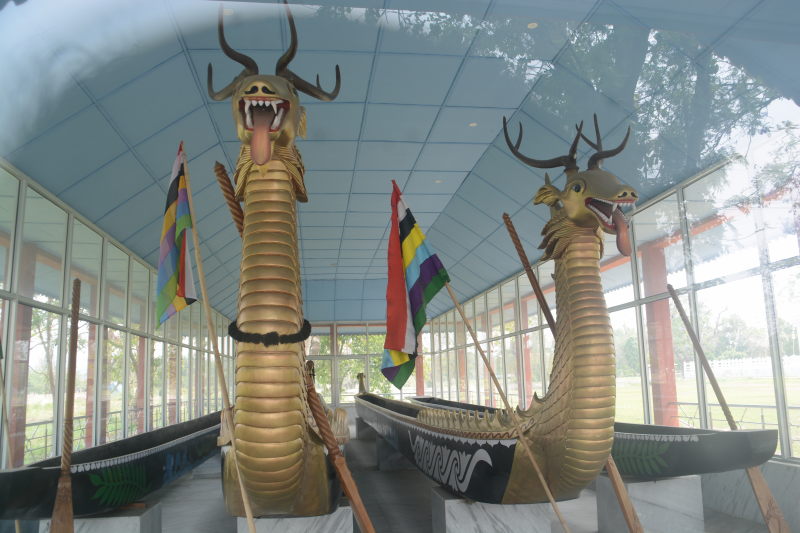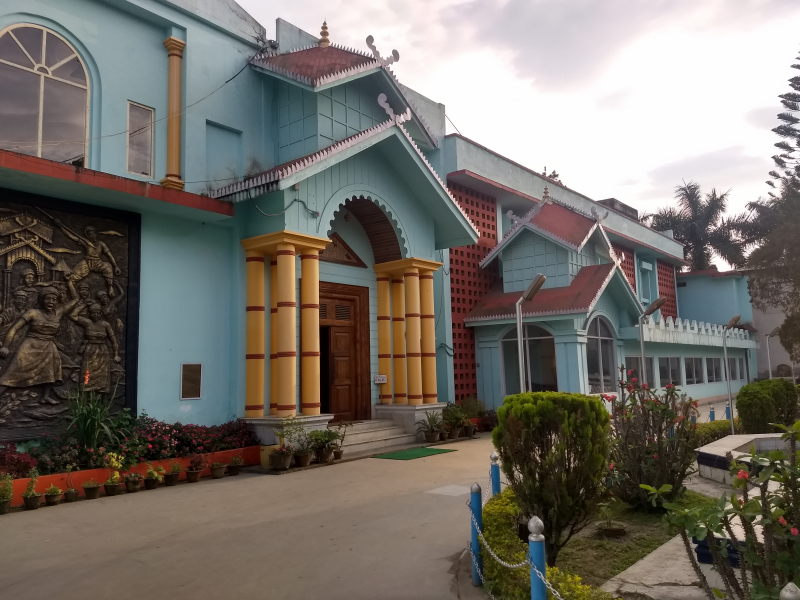Gangtok and Shillong are two of the most popular and commercially developed state capitals in north-east India. Another city that is well-developed and rich in sight-seeing options is the Manipuri capital of Imphal. While Gangtok and Shillong are easily reachable from West Bengal’s Siliguri and Assam’s Guwahati easily, Imphal takes some work. And that is why the fascinating capital of the Meitei dynasty is not on most tourists’ radar. We at India 360 will make it easy for you to plan a trip to this beautiful and clean city built around a military fort.
Geography of Imphal
Imphal is squat at the centre of Manipur state. While Manipur is a hilly state at the edges, Imphal itself is on the flat plains of two river banks. The core area of the city is sandwiched between two rivers, Nambul to the west and Imphal river to the east. The Kangla Fort, around which Imphal city is built, splits the city into two parts, which are two administrative districts. Imphal West lies to the west of the fort and contains the prime locations of the city, including India’s first polo ground and the state government. Imphal East is laidback and is home to residential localities, bungalows, landscaped gardens and forest patches.
Imphal is about 50 km north of Loktak lake, a freshwater lake formed in the middle of Manipur state, which is famous for floating islands and the Sangai dancing deer. The surrounding mountains drain their water into the flat basin of the lake. The Nambul river, which flows to the west of Imphal, also drains into Loktak lake. The lake and the adjacent area forms the urban areas of Manipur, consisting of Imphal, Moirang and Churachandpur cities, whereas the mountains themselves have remote villages with limited transport. The lake basin is home to 90% of Manipur’s population.
Since Imphal is in the flat plains, the weather gets really hot and humid. The climate is typically tropical. This is different from some of the other capitals in the north-eastern states, which are all hill stations, e.g. Gangtok, Shillong, Kohima and Aizawl. Itanagar (Arunachal Pradesh) and Agartala (Tripura), both situated in low-altitude river valleys, are two other north-eastern state capitals that have weather comparable to that of Imphal.
People of Imphal
A common misconception about north-eastern India is that due to the similarity of facial appearance to the nations from south-east Asia, the people are assumed to be Buddhist. In reality, only Arunachal, West Bengal’s Darjeeling district and Sikkim have pockets of Buddhism. In Manipur, Hinduism is practised in the lake area and Christianity among the mountain tribals.
The people of Imphal are descendants of Meitei rulers. Meiteis were Vaishnavite Hindus, with their chief deity being Lord Krishna. The chief temples of Meiteis are situated inside Kangla fort, such as Govindaji temple, Pakhangba temple, Tikendrajit temple, etc. Meitei is the only community within Manipur that isn’t classified as scheduled caste or scheduled tribe. This is because the community are erstwhile rulers, noblemen, ministers and priests.
The people of Imphal are said to speak the Manipuri language, which is a misnomer. There are more than 30 languages in the state, most of them unintelligible from each other. The word Manipuri refers to a citizen of Manipur just like the word Indian isn’t a language, but a nationality. When we refer to the Manipuri language, we are referring to the tongue of Meiteis. It so happens that the lake region is politically influential in Manipur and Imphal is the state capital. From where the legislative assembly sits, all they hear on the streets is Meitei and hence that is considered to be the ‘state language’ or ‘Manipuri’. This is similar to the way that New Delhi insists that Hindi is the national language of India or the way USA and UK assume that English is understood and spoken throughout the world. To the tribal population of Manipur, such as the Tangkhuls & Paites, the Meitei language, Hindi and English are all equally foreign.
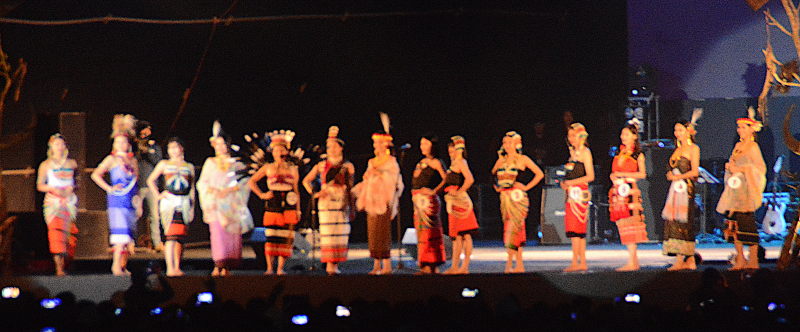
There are several tribal communities in Manipur, but not all of them speak Manipuri, the tonue of Meiteis
Because of the spread of Christian missionary schools in the state, most citizens of Manipur, Imphal included, are comfortable with English these days. Hindi is spoken sparingly in Imphal city, but not at all in tribal Manipur. Even at Imphal, Hindi isn’t a language you should use for having deep conversations about hobbies, family and spirituality. A Meitei native’s Hindi is limited to words from shopping, travel and bare essentials. When in doubt, always use English.
Meitei has an indigenous script that was exclusively used during the rule of the dynasty. The script’s rules are similar to Burmese and a far cry from English alphabets or Devnagari. Sometime after independence, the native Meitei script was dropped in favour of Bengali script. But fortunately, after the year 2000, the Meitei script was reintroduced in education and public usage. Our Imphal friend, Yaiphaba Rajkumar, who studied in the ’90s learnt the Bengali script, but his sons are now learning the Meitei script. The Bengali script is still used in Imphal, but for Bishnupriya language, a dialect of Bengali that is local to Manipur and southern Assam.
There are several occupations in Imphal since it is a well-rounded city. No particular occupation takes centre stage. Due to the presence of administrative offices, several people join government jobs. Small industries, cottage industries and regional private companies can be found all over Imphal and they employ a large part of Imphal’s workforce. Tourism isn’t particularly well-developed in Imphal yet, so that field doesn’t account for a significant workforce. Due to Manipur sharing a border with Myanmar, there are several army outposts around Imphal. But Manipuris do not make up much of the force. The army people you see in Manipur are from the rest of India. It is with them that you can comfortably speak Hindi.
The women in Imphal city are very enterprising and often have their own self-made tiny businesses, practising craft occupations such as basket weaving, cloth weaving, pickle making, etc. A look at Ema Keithel, the women-run market at the centre of the city will give you an idea of how women in Imphal want to be self-reliant.
Here is a list of places to see in Imphal city
Kangla fort
<Kangla dragons> <Dragon boat>
<Pakhangba temple> <moat>
- The dragons guarding Kangla fort prison
- The moat surrounding Kangla fort
- Pakhangba temple
- Dragon boats
Kangla fort was the seat of the Meitei dynasty. The royal palace was inside the fort. Today the fort is a heritage precinct and has several things to see. Here are some interesting things.
- The moat surrounding the lake campus. You will often see rowers use the moat for rowing practice.
- A shed showcasing a dragon boat. Dragon boats were used for racing. This concept is very similar to Kerala’s longboats.
- Pakhangba temple
- Govindaji temple
- Tikendrajit temple
- A couple of stone dragons that guard the gates of the state prison. The state prison used to be the fort dungeons during the Meitei rule.
- Slim’s cottage: a cottage that belonged to General Slim, the general of the British army that colonised Imphal.
- Kangla museum: a museum that shows the history of Kangla fort and Meitei rulers. But the state museum is a better source.
Imphal polo ground
Polo is a sport similar to hockey, but played on horseback. The sport is said to have originated at Imphal and indulged in by both Meiteis and the British. Immediately to the west of Kangla fort’s western gate, across the road, you will see India’s first polo ground within Bir Tikendrajit park.
Ema Keithel
The word ‘Ema Keithel’ means ‘Mother’s Market’ in Meitei tongue. Ema Keithel is run solely by women and is the largest such market in the world. The market provides livelihood to 5000 women. You can purchase clothes, handicrafts and food items.
Manipur state museum
This museum is named the ‘state museum’ but it is quite Meitei specific. Criticism aside, this museum is one of the best places to get a snapshot of the entire history of the Meiteis, going back 600 years. The story of every ruler in the dynasty has been described in detail, along with their scuffles with kings from Myanmar and the British. Manipur progressed as a kingdom separate from the rest of India and the Meiteis have a big hand in the progress.
A small gallery separate from that of the Meitei dynasty has a few photos and artefacts from the tribes around Manipur, such as the Tangkhuls, Paites, etc.
Ningthem Pukhuri
This is a small clear-water lake to the south of downtown Imphal. The lake is surrounding by the hills. You won’t see too many people around the lake. It seems to be a laidback promenade for morning or evening walks and is a very quiet place throughout the day. There is a small eco-park in the south-west corner of the lake with a children’s play area.
Art galleries, public parks and river promenades
There are several art galleries such as the Three Mothers’ art gallery and RKCS art gallery. There are several public eco-parks around Kangla, such as Kumngaipat, Bhakta Ashram park, Bir Tikendrajit park (same complex as the polo ground) and Imphal war cemetery. There are also tiny promenades and river lookout points throughout the city on the banks of the two rivers: Imphal and Nambul.
Getting to Imphal
Imphal has limited transport service and can get difficult to reach. Here are the ways to do so.
Air
This is the easiest way to reach Imphal. There are flights from major cities like New Delhi, Mumbai and Kolkata that connect to the city’s Bir Tikendrajit airport at least twice a day. If your trip has a schedule, then taking a flight is the best way to reach the city.
Rail
There are no railways in Imphal yet. This is set to change as the Indian government is focusing on the seven sisters railway route project, with the seven sisters being the seven states in the north-east of India. A branch line is being built from the Lumding – Silchar – Agartala route, which is already part of the North-East Frontier railway’s Lumding division. Silchar will be a major railway junction with railway lines reaching both Imphal and Mizoram’s Aizawl.
Road
There are no government state buses that ply to Imphal. Private operators like Seven Sisters Tours and Travels and Damayanti service run buses to Imphal from Guwahati, Karimganj, Silchar and Lumding.
Self-drive
We used a motorbike to travel around north-east and entered Imphal from Kohima in Nagaland. You don’t have to do such a feat, since a car will do perfectly fine. That said, here are the two most common routes used to travel to Imphal.
- Direct to Imphal: Rest of India – Guwahati – Nagaon – Hojai – Lumding – Haflong tunnel – Haflong – Silchar – Jirighat – Jiribam – Nungba – Khongsang – Noney – Imphal
- Kohima to Imphal: If you are driving to Manipur after covering Nagaland, here is the route to use: Kohima – Khonoma – Dzukou – Maram – Senapati – Koirengei – Imphal
Commuting within Imphal
Within Imphal, you can ply in auto-rickshaws or shared 8-seater taxi vehicles. Rickshaws will get you from place to place faster. 8-seater shared taxis are cheaper, but the drivers wait for the taxis to fill up before they leave.
Conclusion
Manipur is a fascinating state to explore and Imphal is a unique city with a rich history. While it may not be an efficient idea to visit Imphal alone for the sake of sight-seeing, a trip to Imphal can be combined with a complete trip to Nagaland, Manipur and Mizoram.
Further reading
- Travel Triangle: 10 Things To Do In Imphal To Relish Ultimate Solitude Of The Northeast
- Tour My India: Top 10 Places to Visit & Things to Do in Imphal
- Trans India Travels: Top 5 Places To Visit In Imphal


